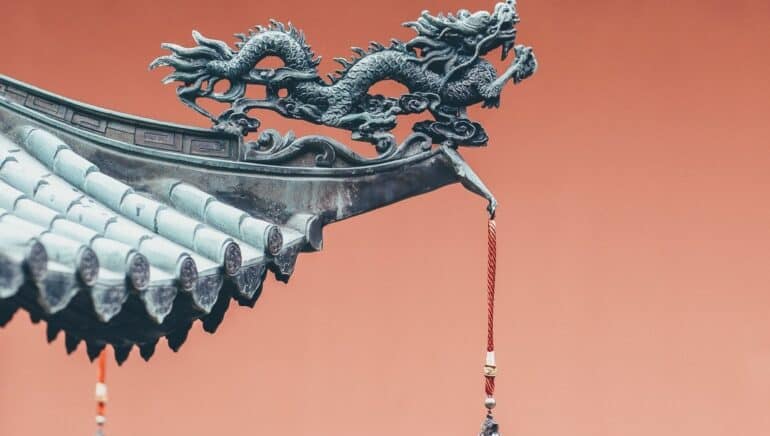You need a mixture of history, economics and politics to hear through the everyday noise and recognize the big trends of the future. In our new series, Erste AM’s investment team identifies those factors that will determine the next 10 years.
First Text: the next 10 years
For anyone who is brave enough to formulate long-term views on the global economy and markets, the role that China will play in the future is certainly one of the most important factors to consider. Actually, it is far from being a specialist topic reserved for some well-informed insiders.
The increasing international presence and influence of China has become a household topic in the last few decades all over the world as the market of consumer goods has been flooded with „Made in PRC” and Chinatowns have grown out of nowhere in all major urban areas of the world.
China already number one based on purchasing power parity
On a purchasing power parity adjusted basis, China is already the largest economy in the world with an annual output of USD 27.3 trillion, which is more than 20% above the US figure, according to the International Monetary Fund. In nominal US dollar terms, the United States still maintains its lead with China’s GDP coming in at two-thirds of the US level.
But the gap has been continuously narrowing for many years and the United States losing its number one status after some 150 years is a realistic scenario for the long run.
Lots of people are convinced that this is almost given as the rise of China will continue. The question is: are these expectations based on fundamentals or simply on extrapolation of past trends?
Many of us may recall a somewhat similar story from the 1980s, when the economic miracle of Japan was a hot topic and many US companies were concerned about losing their dominance to Japanese peers. This paradigm shift, at that time anticipated by many, had not been realized as the Japanese economy was losing its steam in the early nineties.
Size matters
It could be different this time, of course. First of all, in this case size does matter. With the world’s largest population and rapidly increasing global geopolitical weight, China is better positioned to challenge the dominance of the United States than Japan ever was.
Many of us believe that in 10 years, Chinese companies will dominate the market in several future-oriented industries (biotech, telecommunications, cloud technology, robotics, alternative energies). Thus, China may not only be the largest economy in the world, but Chinese companies will also dominate the market with their know-how.
Economic Power Ranking

Source: https://www.thelancet.com/journals/lancet/article/PIIS0140-6736(20)30677-2/fulltext
“Peak China” scenario
Some of us are not so sure. There is an increasing likelihood of a „Peak China” scenario, which foresees significant headwinds for China’s efforts to continue to catch up. Indeed, many of the factors that helped to push China’s drive in the last 50 years are currently stalling or even going into reverse.
Take demographics, for example. With over 1.4 billion people, China has the largest population in the world. But recent trends are not particularly supportive for the long term growth outlook: in the last 30 years annual population growth slowed from 1.8% to 0.4% now and keeps shrinking.
In the same timeframe, median age rose from 25 years to 38 years. The latest estimates show the Chinese population to drop below that of India soon and actually decrease relative to US population.
A new cold war?
Another example is global trade, which has been growing rapidly in the last 50 years and helped to turn China into the manufacturing hub of the world. Falling costs of transportation and communication made fast globalization possible.
However, growth of global trade volumes have slowed significantly in the last decade. The recent COVID pandemic is likely to create further headwinds as governments and companies will likely re-evaluate their supply chains to seek protection from elevated risks of disruptions. Tensions between the USA and China do not help either and we believe these tensions will continue to increase in the next 10 years, regardless of who is acting in Washington or Beijing.
In fact, there is a high probability that these tensions will turn into a kind of cold war, with no direct military action between the two countries, but blocks forming around them and proxy wars may also occur.
Chinese government plays a key role
Obviously, the Chinese government has been aware for some time that the economy cannot rely on the same factors to continue its exorbitant growth. Thus, enormous efforts are being made to change the main drivers of economic expansion to domestic consumption, technology and innovation, in order to avoid the famed middle income trap that many countries could not escape.
Although some promising results have already emerged, there are doubts surrounding the long-term success of this project. After all, market forces are still limited, the economy continues to be dominated by central planning, leading to major inefficiencies, misallocation of resources, overcapacities in several segments, creation of zombie companies, debt sustainability issues, etc.
Market-oriented reforms, which were first launched in the 1970s, may not continue. On the contrary: there are wide-spread fears that the regime may become more authoritarian under the leadership of Xi Jinping.
Chinese assets influences asset management
From an investment point of view, China and its influence on the global economy and markets cannot be ignored in the next 10 years, whichever scenario materializes. Chinese assets deserve, and will continue to deserve a distinct asset class status both in the minds of investors and in the product range of investment firms.
However, in the end, it is probably more appropriate now than ever to reiterate the old wisdom: past performance is not a guide for the future.
More in our dossier: https://blog.en.erste-am.com/dossier/longterm-outlook/
Legal note:
Prognoses are no reliable indicator for future performance.


